For production sound mixer Mark Ulano, the journey he has taken on Quentin Tarantino’s films has been a decidedly unique experience, and Once Upon a Time in Hollywood was no exception. “He is very old school,” Ulano said about Tarantino, noting that the universe in which you operate on a film with this director is apart from any other filmmaker. “Quentin is dedicated to the notion of the performance is the most important. Once that parameter is set, everything else accommodates the director on the set.”
Calling a Tarantino film “a dream world,” Ulano related that mixing sound on such a movie is a difficult task, but a truly rewarding one. “There’s a respect across the board for all of the departments on the project,” he described. “I have to be at my maximum creative potential. I’m with Quentin 25 years [and] boom operator Tom Harding for 21 years. You have this understanding—you work on solutions and not about ego. When you have that, you get a really high percentage of successful outcomes. We’re here for this director and his intent.”
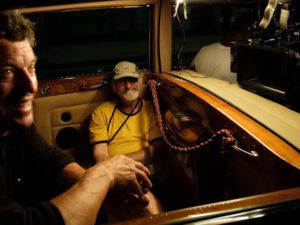
According to Ulano, Tarantino is considerably comfortable in his own skin regarding his approach to filmmaking. “He has a tool set to evaluate characters’ performances in the moment,” Ulano stated. “That fluency he has as director extends to everybody on the set. The actors on Quentin’s set feel such a sense of safety and freedom. Within two hours of being on the set, you can see that he’s completely loose. My mission is for the audience to stay in a state of belief of those characters. We are creating the foundation of those performances that will speak to the audience.”
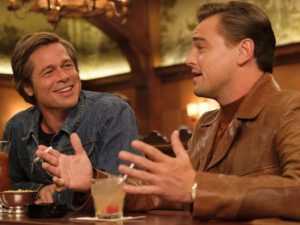
Also critical to Once Upon a Time in Hollywood’s soundscape was supervising sound editor Wylie Stateman. “The integration of production sound, music, and added sound effects and sound design are the areas that I take great pleasure doing,” said Stateman, who is currently writing a book, Creating Content in Terms of Sound. “My job is to filter through that stuff with the film editor, [Fred Raskin], and with Quentin to select the best bits. We make the dialogue track as clear as possible and augmented with sound effects, sound design, and with Foley, ADR [automated dialogue replacement], and group ADR.”
When Stateman first read Tarantino’s script, he took 20 pages of detailed notes. Next, he broke down the script into a series of creative ‘baskets’ that included notes about music, vehicles, locations, transitions, and any item that would become a setpiece where sound would play a major role. “Some [sound elements] come from songs that Quentin preselected and sound design elements that we blend to create a feeling of tension or to create comic beats,” Stateman explained. “We started prior to principal photography and go all the way through translation into different languages.”
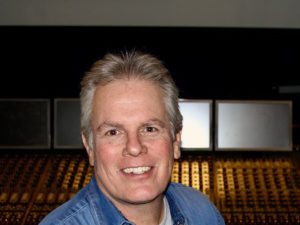
To Stateman’s liking, Tarantino, said the sound editor, is extremely observant and a connoisseur of detail. “That fits perfectly with my personality and mindset,” Stateman conveyed. “Audio, while it is a composition, it benefits from both macro and micro details: macro comes from the script and micro can be as delicate as the sound of dog food coming out of the can; as gentle as a kiss or as harsh as somebody getting their brains bashed out. Sound becomes more beautiful in its micro detail.”
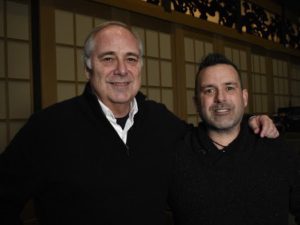
Lastly in the process is the sound re-recording mixing period, courtesy of father and son team Michael and Christian Minkler. “We are the final stage,” said Michael Minkler said of the creation of Once Upon a Time in Hollywood. “Nothing happens past us. We go right down to the wire—10 days from the release date.”
Of note, Michael Minkler has worked on all of Tarantino’s films since Jackie Brown; Christian joined him as a re-recording mixer on The Hateful Eight. “I stay away until they get to the point of a rough cut,” said Michael Minkler of a version of Once Upon a Time in Hollywood which ran four hours. Another 10-12 weeks of work were required to complete the final mix. “Our responsibility is to make a final mix of music, dialogue, and sound effects. When it comes to Quentin, these are his creations—every thought regarding the movie is his original thought. When he writes it, he knows what he wants it to sound like; he writes sound into the script.”
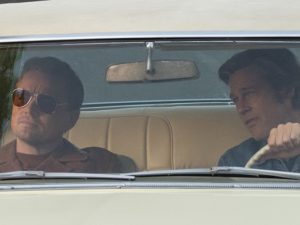
Now Oscar nominated as a father-son team, the Minklers are clearly overjoyed. “This is obviously the best moment of my career,” said Christian Minkler. “First nomination and working with somebody like Tarantino and be nominated with my father. It’s the perfect storm for me.”
Over a 40-year career, Once Upon a Time in Hollywood is Michael Minkler’s 12th nomination. “I have had a lot of highs and a lot of lows,” he said. “Everyone’s careers do have their ups and downs. It’s been ten years since my last [nomination]. To make it this time and with Chris made it so special. It’s very emotional trip.”





